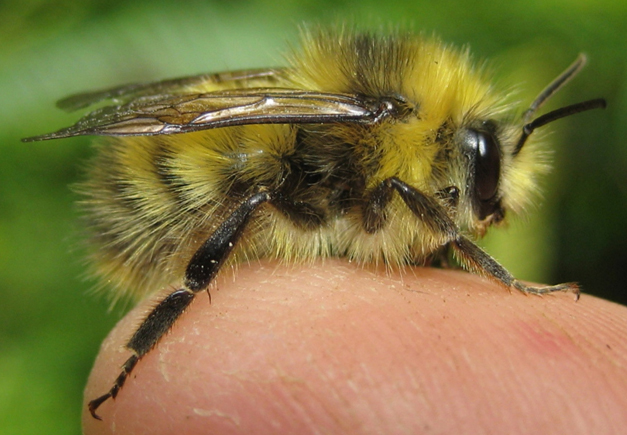 S. Name: Bombus spp. (BOM-bus)
S. Name: Bombus spp. (BOM-bus)
C. Name: Bumblebee
Size: 10-23 mm
Flying teddy bears, bumblebees are large and furry and easy to spot. Several species can be found in each state with different species being active at different times of the year. They typically have a base color of black with yellow, orange and/or white markings on the head, thorax and abdomen. These markings are used to identify different species.
In Washington State the bumblebee is the only native bee that lives in colonies. Unlike the honeybee, a bumblebee queen starts a new colony at the beginning of her nesting season and that colony dies in the same year. They generally nest underground, but nests can also be found in clumps of grass, woodpiles, bird nest boxes and under items left on the ground (like pots or an upside-down wheelbarrow). At Bee Haven Apiaries we cultivate brush piles to help provide habitat for these bees as well as other wildlife.
Bumblebees carry pollen in “pollen baskets” on their hind legs, depressions called corbicula that are surrounded by stiff hairs that hold the pollen in. They also collect some nectar, which they store in wax cups in their hive, but they do not stockpile it nor do they process it into honey. The small amounts of nectar they are able to store are not enough to sustain the colony for more than a day or two. If the weather become too cold or stormy for more than a few days, the colony could starve.
If you like to grow tomotatos, bumblebees should be your favorite pollinator. They are particularly suited to pollinating certain plants, like tomatoes, because of a technique these use called “buzz pollination.” Buzz pollination is accomplished when the bee grasps the edges of the flower with all six feet and then flexes her wing muscles, causing her and the flower to vibrate at a high frequency. This sonication is actually a more efficient method of dispersing pollen.